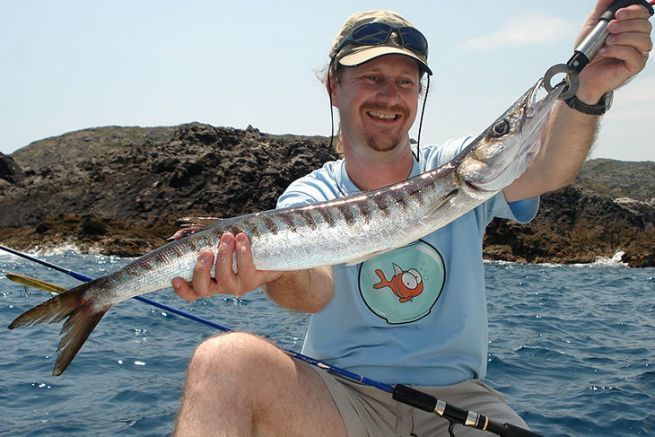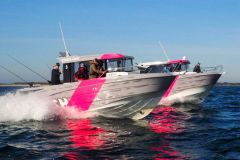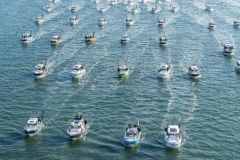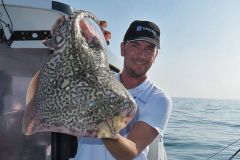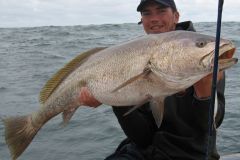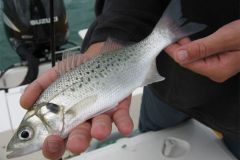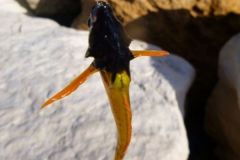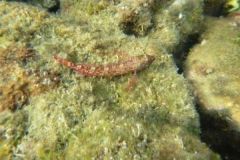Scientific name
Sphyraena sphyraena (Linnaeus, 1758)
Also called barracuda, sea pike, barracuda
Morphology
The barracuda has a very streamlined body and a pointed head split by a large mouth similar to a duck's beak. It has a characteristic dentition with multiple high and pointed teeth of canine type. Its is dark greenish-gray and its flanks and belly are silver-gray with dark stripes.
Fishing spots
It is found near harbor areas, mouths and over rocks, shoals and drop-offs to a depth of 100 m. Barracuda are found in the Mediterranean and in the South Atlantic (Bay of Biscay)
Fishing techniques
The barracuda feeds on consistent prey: cephalopods and oily fish such as mackerel, horse mackerel, anchovies, sardines. It can be fished with scrambled fishes, using whole dead fishes or live ones. From the shore, it can be fished at night from the dams with dead fish, especially a half orphie lochée which works very well. The throw and drag of swimming fish is also very good.
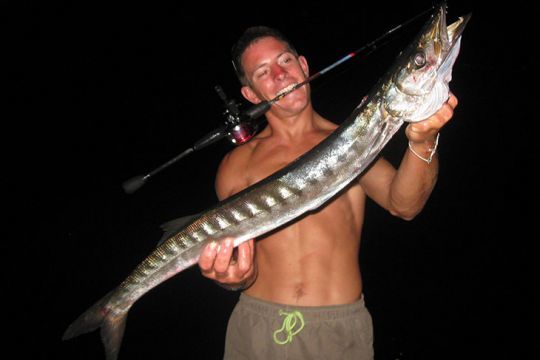
Its sharp teeth make it difficult to dry. Breakages are not rare. The use of a steel leader allows to face the problem, unfortunately the hits are much less numerous with such a leader.
Reproduction
The European barracuda reaches its sexual maturity at 60 cm. The reproduction takes place from May to August in the water column.
Size and weight
- Legal size of capture (legal minimum): 30 cm
- Size of sexual maturity : 60 cm
- Average size: 50 to 60 cm
- Maximum size: 1.20 m (9 kg)
- French record : 7,07kg (Nice, 31/07/2007)
Good to know
Barracuda feeding activity is most intense at night. They can be seen hunting on the surface near harbor lights.
